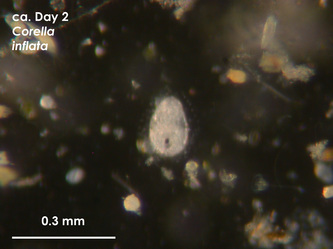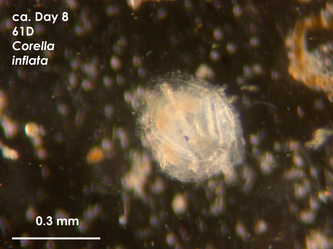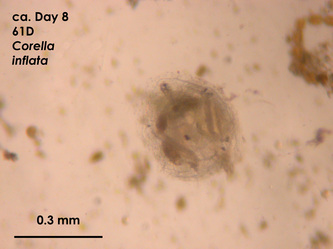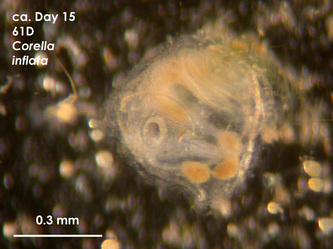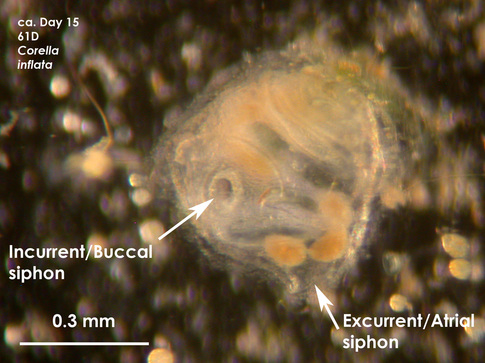Corella inflata
This solitary ascidian has larvae and juveniles that are very small, around 160 microns (0.16 mm). When they first settle, the juveniles of Corella inflata are tiny, egg-shaped, crystalline-looking structures, often with a black dot in the middle. The juveniles grow into round, translucent bodies without visible ampullae. The juveniles of Corella inflata take much longer to grow and develop siphons than the juveniles of colonial ascidians. When the siphons develop, one buccal/incurrent siphon and two atrial/excurrent siphons form. However, only one buccal and one atrial siphon is apparent in these photographs.
* Note about the pictures: The day given in each picture is an approximate. Corella inflata juveniles take three to five days to develop siphons, meaning that during the first few days of development they show no signs of movement. In this experiment, they were assumed to be detritus when they first appeared on the petri dishes, and therefore were not well recorded in their earlier days.
* Note about the pictures: The day given in each picture is an approximate. Corella inflata juveniles take three to five days to develop siphons, meaning that during the first few days of development they show no signs of movement. In this experiment, they were assumed to be detritus when they first appeared on the petri dishes, and therefore were not well recorded in their earlier days.
